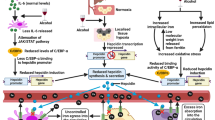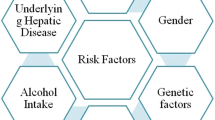Abstract
Gaucher disease (GD) is most frequent disorder of glycolipid storage. The glucosylceramide accumulation might lead to oxidative stress and changes in lipid profile. Regarding the main role of trace elements in hematopoiesis and oxidative stress, this study was aimed to evaluate the zinc and copper levels, three oxidative stress parameters, and lipid profile in GD. Thirty-three patients with GD along with 64 age- and sex-matched healthy controls participated in the study. The levels of zinc and copper were determined using atomic absorption/flame emission spectrophotometer. Malondialdehyde level was measured using HPLC. Total antioxidant capacity (TAC), catalase activity, and lipid profile were assessed using colorimetric methods. Data were analyzed using SPSS software version 16.0. Significant decrease in the serum levels of Zn (p < 0.001) and Cu (p < 0.001) was observed in patients with GD compared to controls. Subjects in control group showed significantly higher levels of TAC than patients with GD (p < 0.001). In contrast, plasma concentration of malondialdehyde was insignificantly higher in patients with GD than controls (p = 0.06). There was a direct correlation between TAC and hemoglobin concentration (p = 0.035; r = 0.369) in patients with GD. Furthermore, the calculated area under receiver operating characteristic curve for HDL cholesterol was equal to 0.938. The results showed that both zinc and copper levels decreased in patients with GD. Patients with GD showed decreased serum content of TAC. It was found that improving the deficiency of zinc and copper by supplementing them could be useful in management of patients with GD.



Similar content being viewed by others
References
Beutler E, Grabowski GA (2001) Gaucher disease. In: Scriver CR, Beaudet AL, Sly WS, Valle D (eds) The metabolic and molecular bases of inherited disease. McGraw-Hill, New York, pp 3635–3668
Pacheco N, Uribe A (2013) Enzymatic analysis of biomarkers for the monitoring of Gaucher patients in Colombia. Gene 521(1):129–135
Jack A, Amato D, Morris G, Choy FY (2014) Two novel mutations in glucocerebrosidase, C23W and IVS7-1 G>A, identified in type 1 Gaucher patients heterozygous for N370S. Gene 538(1):84–87
Schwartz IVD, Göker-Alpan Ö, Kishnani PS et al (2017) Characteristics of 26 patients with type 3 Gaucher disease: a descriptive analysis from the Gaucher Outcome Survey. Mol Genet Metab Rep 14:73–79
Canda E, Kose M, Kagnici M, Ucar SK, Sozmen EY, Coker M (2018) Patients with Gaucher type 1: switching from imiglucerase to miglustat therapy. Blood Cells Mol Dis 68:180–184
Mello AS, da Silva Garcia C, de Souza Machado F, da Silva Medeiros N, Wohlenberg MF, Marinho JP, Dani C, Funchal C, Coelho JC (2015) Oxidative stress parameters of Gaucher disease type I patients. Mol Genet Metab Rep 4:1–5
Zahran AM, Elsayh KI, El-Deek SE, El-Baz MA (2015) Oxidative stress, trace elements, and circulating microparticles in patients with Gaucher disease before and after enzyme replacement therapy. Clin Appl Thromb Hemost 21:58–65
Agarwal R, Chase SD (2002) Rapid, fluorimetric-liquid chromatographic determination of malondialdehyde in biological samples. J Chromatogr B Anal Technol Biomed Life Sci 775:121–126
Roversi FM, Galdieri LC, Grego BH et al (2006) Blood oxidative stress markers in Gaucher disease patients. Clin Chim Acta 364:316–320
Raghavan S, Subramaniyam G, Shanmugam N (2012) Proinflammatory effects of malondialdehyde in lymphocytes. J Leukoc Biol 92:1055–1067
Gong J, Xiao M (2018) Effect of organic selenium supplementation on selenium status, oxidative stress, and antioxidant status in selenium-adequate dairy cows during the periparturient period. Biol Trace Elem Res 186:430–440
Lee YH, Bang ES, Lee JH, Lee JD, Kang DR, Hong J, Lee JM (2018) Serum concentrations of trace elements zinc, copper, selenium, and manganese in critically ill patients. Biol Trace Elem Res 188:316–325. https://doi.org/10.1007/s12011-018-1429-4
Manafikhi H, Drummen G, Palmery M, Peluso I (2017) Total antioxidant capacity in beta-thalassemia: a systematic review and meta-analysis of case-control studies. Crit Rev Oncol Hematol 110:35–42
Zekavat OR, Bahmanjahromi A, Haghpanah S, Ebrahimi S, Cohan N (2018) The zinc and copper levels in thalassemia major patients, receiving iron chelation therapy. J Pediatr Hematol Oncol 40:178–181
Michalska-Mosiej M, Socha K, Soroczyńska J et al (2016) Selenium, zinc, copper, and total antioxidant status in the serum of patients with chronic tonsillitis. Biol Trace Elem Res 173:30–34
Watad S, Abu-Saleh N, Yousif A, Agbaria A, Rosenbaum H (2018) The role of high density lipoprotein in type 1 Gaucher disease. Blood Cells Mol Dis 68:43–46
Cenarro A, Pocovi M, Giraldo P, Garcia-Otin AL, Ordovas JM (1999) Plasma lipoprotein responses to enzyme-replacement in Gaucher’s disease. Lancet 353:642–643
Mozafari H, Taghikhani M, Khatami S, Alaei MR, Vaisi-Raygani A, Rahimi Z (2016) Chitotriosidase activity and gene polymorphism in Iranian patients with Gaucher disease and sibling carriers. Iran J Child Neurol 10:62–70
Sista RS, Wang T, Wu N, Graham C, Eckhardt A, Bali D, Millington DS, Pamula VK (2013) Rapid assays for Gaucher and Hurler diseases in dried blood spots using digital microfluidics. Mol Genet Metab 109:218–220
Hollak CE, van Weely S, van Oers MH, Aerts JM (1994) Marked elevation of plasma chitotriosidase activity. A novel hallmark of Gaucher disease. J Clin Invest 93:1288–1292
Benzie IF, Strain JJ (1996) The ferric reducing ability of plasma (FRAP) as a measure of “antioxidant power”: the FRAP assay. Anal Biochem 239:70–76
Khoschsorur GA, Winklhofer-Roob BM, Rabl H, Auer T, Peng Z, Schaur RJ (2000) Evaluation of a sensitive HPLC method for the determination of malondialdehyde, and application of the method to different biological materials. Chromatographia 52:181–184
Goth L (1991) A simple method for determination of serum catalase activity and revision of reference range. Clin Chim Acta 196:143–151
Friedewald WT, Levy RI, Fredrickson DS (1972) Estimation of the concentration of low-density lipoprotein cholesterol in plasma, without use of the preparative ultracentrifuge. Clin Chem 18:499e502
Oteiza PI, Mackenzie GG, Verstraeten SV (2004) Metals in neurodegeneration: involvement of oxidants and oxidant-sensitive transcription factors. Mol Asp Med 25:103–115
Zago MP, Oteiza PI (2001) The antioxidant properties of zinc: interactions with iron and antioxidants. Free Radic Biol Med 31:266–274
Fairweather-Tait SJ, Cashman K (2015) Minerals and trace elements. World Rev Nutr Diet 111:45–52
Gaffney-Stomberg E (2018) The impact of trace minerals on bone metabolism. Biol Trace Elem Res 188:26–34. https://doi.org/10.1007/s12011-018-1583-8
John L (2012) Update on anemia and neutropenia in copper deficiency. Curr Opin Hematol 19:58–60
Ghiselli A, Serafini M, Natella F, Scaccini C (2000) Total antioxidant capacity as a tool to assess redox status: critical view and experimental data. Free Radic Biol Med 29:1106–1114
Deganuto M, Pittis MG, Pines A, Dominissini S, Kelley MR, Garcia R, Quadrifoglio F, Bembi B, Tell G (2007) Altered intracellular redox status in Gaucher disease fibroblasts and impairment of adaptive response against oxidative stress. J Cell Physiol 212:223–235
Jmoudiak M, Futerman AH (2005) Gaucher disease: pathological mechanisms and modern management. Br J Haematol 129:178–188
Gordon S (2003) Alternative activation of macrophages. Nat Rev Immunol 3:23–35
Moraitou M, Dimitriou E, Dekker N, Monopolis I, Aerts J, Michelakakis H (2014) Gaucher disease: plasmalogen levels in relation to primary lipid abnormalities and oxidative stress. Blood Cells Mol Dis 53:30–33
Maccio A, Madeddu C, Massa D et al (2005) Hemoglobin levels correlate with interleukin-6 levels in patients with advanced untreated epithelial ovarian cancer: role of inflammation in cancer-related anemia. Blood 106:362–367
Akca H, Polat A, Koca C (2013) Determination of total oxidative stress and total antioxidant capacity before and after the treatment of iron-deficiency anemia. J Clin Lab Anal 27:227–230
Bitla ARKN, Reddy NS, Nagaraju KV et al (2012) Antioxidant status in patients with metabolic syndrome as measured by ferric reducing ability of plasma (FRAP) assay. J Clin Sci Res 3:114–120
Furukawa S, Fujita T, Shimabukuro M, Iwaki M, Yamada Y, Nakajima Y, Nakayama O, Makishima M, Matsuda M, Shimomura I (2004) Increased oxidative stress in obesity and its impact on metabolic syndrome. J Clin Invest 114:1752–1761
Puzo J, Alfonso P, Irun P, Gervas J, Pocovi M, Giraldo P (2010) Changes in the atherogenic profile of patients with type 1 Gaucher disease after miglustat therapy. Atherosclerosis 209:515–519
Tabet F, Rye KA (2009) High-density lipoproteins, inflammation and oxidative stress. Clin Sci (Lond) 116:87–98. https://doi.org/10.1042/CS20080106
Benzie IF, Devaki M (2018) The ferric reducing/antioxidant power (FRAP) assay for non‐enzymatic antioxidant capacity: concepts, procedures, limitations and applications. In: Apak R, Capanoglu E, Shahidi F (eds) Measurement of antioxidant activity & capacity: recent trends and applications. Wiley, New York pp 77–106
Lemos BS, Medina-Vera I, Blesso CN, Fernandez ML (2018) Intake of 3 eggs per day when compared to a choline bitartrate supplement, downregulates cholesterol synthesis without changing the LDL/HDL ratio. Nutrients 10(2)
Lemieux I, Lamarche B, Couillard C, Pascot A, Cantin B, Bergeron J, Dagenais GR, Després JP (2001) Total cholesterol/HDL cholesterol ratio vs LDL cholesterol/HDL cholesterol ratio as indices of ischemic heart disease risk in men: the Quebec Cardiovascular Study. Arch Intern Med 161:2685–2692
Zimmermann A, Grigorescu-Sido P, Rossmann H, Lackner KJ, Drugan C, al Khzouz C, Bucerzan S, Naşcu I, Zimmermann T, Leucuţa D, Weber MM (2013) Dynamic changes of lipid profile in Romanian patients with Gaucher disease type 1 under enzyme replacement therapy: a prospective study. J Inherit Metab Dis 36:555–563
de Fost M, Langeveld M, Franssen R, Hutten BA, Groener JEM, de Groot E, Mannens MM, Bikker H, Aerts JMFG, Kastelein JJP, Hollak CEM (2009) Low HDL cholesterol levels in type I Gaucher disease do not lead to an increased risk of cardiovascular disease. Atherosclerosis 204:267–272
Pocovi M, Cenarro A, Civeira F, Torralba MA, Perez-Calvo JI, Mozas P, Giraldo P, Giralt M, Myers RH, Cupples LA, Ordovas JM (1998) Beta-glucocerebrosidase gene locus as a link for Gaucher’s disease and familial hypo-alpha-lipoproteinaemia. Lancet 351:1919–1923
Gammon CS, Kruger R, Minihane AM et al (2013) Kiwifruit consumption favorably affects plasma lipids in a randomised controlled trial in hypercholesterolaemic men. Br J Nutr 109:2208–2218
Acknowledgments
We gratefully acknowledge the supports by Pasteur Institute of Iran. We also thank the staffs of Tarbiat Modares University, Kermanshah University of Medical Sciences, and Mofid Children’s Hospital of Tehran, Iran.
Author information
Authors and Affiliations
Corresponding author
Ethics declarations
Conflict of Interest
The authors declare that they have no conflict of interest.
Ethical Approval
The study protocol was approved by the Ethics Committee of Pasteur Institute of Iran, and all procedures were in accordance with the ethical standards of the institutional research committee.
Additional information
Publisher’s Note
Springer Nature remains neutral with regard to jurisdictional claims in published maps and institutional affiliations.
Rights and permissions
About this article
Cite this article
Mozafari, H., Khatami, S., Kiani, A. et al. Oxidative Stress Parameters, Trace Elements, and Lipid Profile in Iranian Patients with Gaucher Disease. Biol Trace Elem Res 193, 130–137 (2020). https://doi.org/10.1007/s12011-019-01709-3
Received:
Accepted:
Published:
Issue Date:
DOI: https://doi.org/10.1007/s12011-019-01709-3




